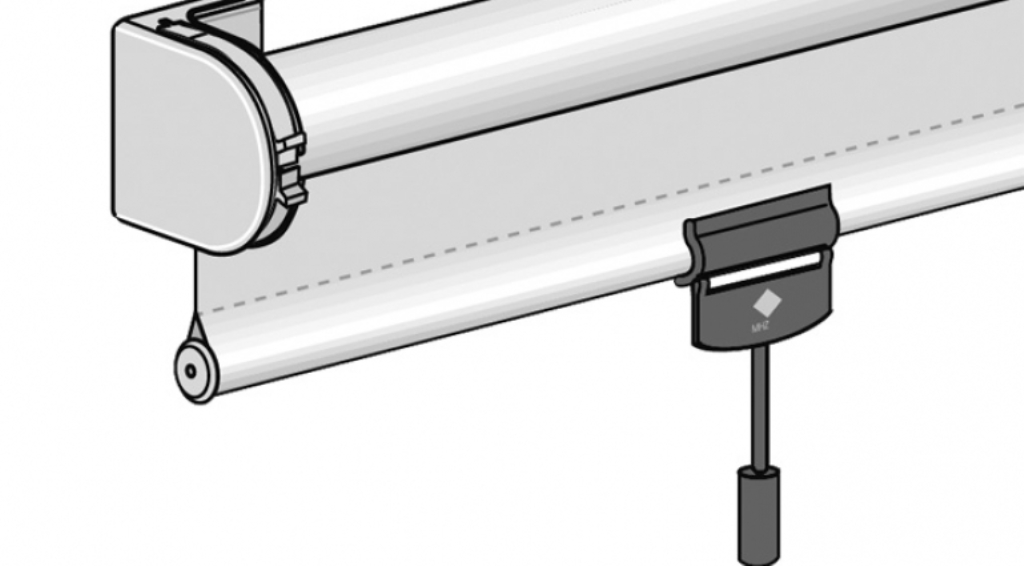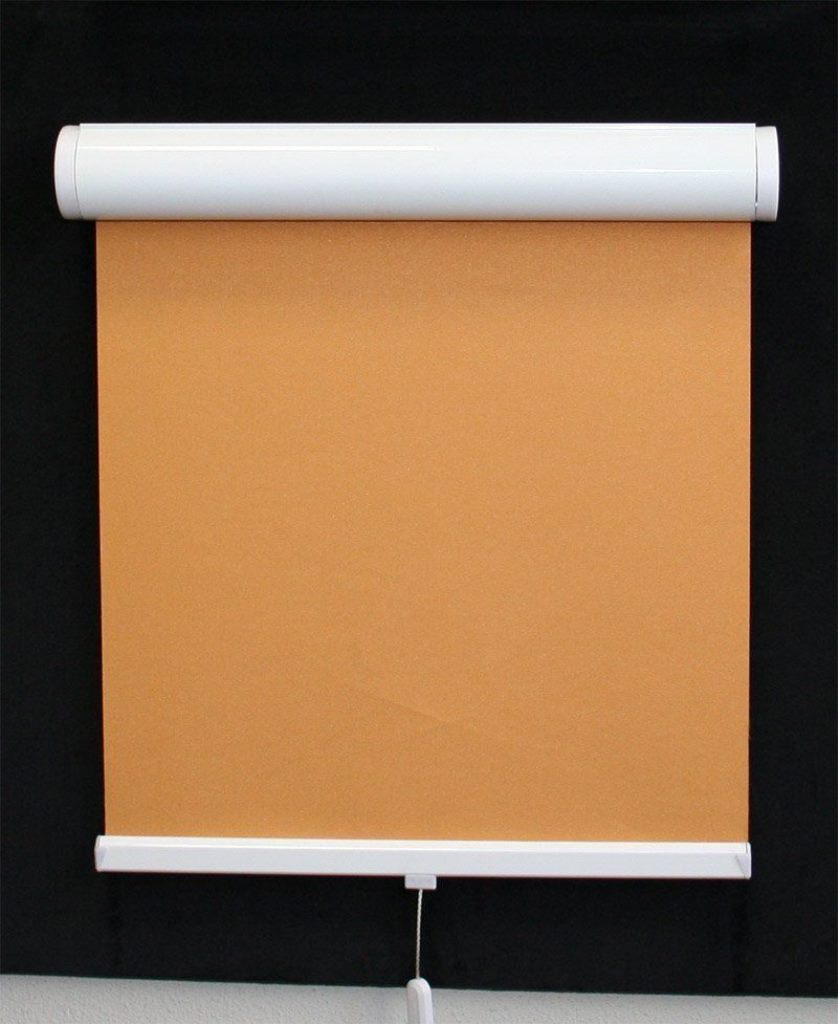Description of mechanisms for curtains
There are several models of designs that drive curtain curtains. Each type of mechanism has its own advantages and disadvantages. In order to select the most suitable product, it is necessary to familiarize yourself in detail with all types of these systems.

Lifting
This design moves according to a simple and straightforward principle: the curtain rises in a vertical plane and can be fixed in suitable positions. When it comes to roller blinds, they curl up at the top. In other cases, the canvas can remain collected in beautiful waves at different levels of height.

The mechanism consists of several components:
- A profile that serves as the base of the structure and is attached to a wall, ceiling or window frame.
- A control element that provides the very process of moving the canvas.
- A weight that is attached to the bottom of the curtain to keep it in shape in any position.
- Plugs are installed on the sides of the structure, ensuring its tightness.

The lifting mechanism for roller blinds can be supplemented with a box for protection and decorative purposes. A roll of cloth is hidden in it. When it comes to Roman (Austrian, French, etc.) curtains, they are raised using pulling cables (laces), the curtain itself is not hidden in a bundle, but is attached to a special plumb line.

Spring loaded
This mechanism allows you to fix the canvas in a constant taut state, eliminating the sagging of individual sections of the fabric. It completely lacks a chain system, the structure is controlled using the regulator knob. The shaft rotates by means of a spring and is secured by a locking element.

Spring structures are popular not only on vertical surfaces, but also for closing window niches that are sloped (for example, an attic). It is very often used as a basis for printed fabrics.

The spring type mechanism is considered an unreliable design, since the spring will stretch and wear over time. But with proper care and careful use, the product can last for a long time.

Ball mechanism
The up and down movement is by means of a chain, which is made up of small plastic balls spaced at equal intervals. They fall into special holes on the drum, starting the movement.The action of the mechanism is carried out on the principle of a bicycle transmission, the elements are precisely matched to each other, the tight fit ensures a smooth and even movement.

Important! Ball curtains will work for a long time without breakage if you do not jerk them with great effort. Rough movements can break the chain or damage parts of the device.
Rope
This is the simplest type of construction and is often used as a mechanism for Roman blinds. It includes the following elements:
- Basic lace that connects to the ropes that hold the horizontal planks.
- A roller that directs the force from the main cord to the frame.

Adjustment of the opening degree of the curtain occurs as a result of changing the length of the threads (cables) that pull the curtain to any position, folding it into an "accordion" or gathering it into folds.

Automatic control
Mechanisms equipped with an electric drive are relatively new products. This is a modern device capable of working automatically, without physical effort on the part of a person. The design is equipped with a small motor, which is located in the shaft and provides the lifting and lowering of the curtains.

Control in this case occurs using a remote control. By pressing the corresponding buttons, you can move, stop the curtain at the desired level. Electrical structures are a modern component of a smart home, they can be controlled separately for each set, or in a complex for a room.

Such a product costs an order of magnitude more expensive than the previous options, but it is more functional and practical in everyday life. The mechanism can be used to equip curtains of various weights, shapes and volumes. This is especially convenient when they are too high.

What curtains is suitable for
The above designs are applied to various types of curtains that open upwards. They have steel parameters and are not adjustable in width. As a rule, the area of the canvas coincides with the size of the window opening. Often such products are called flat curtains, since in the open state they represent a flat surface without folds or sagging.

All lifting curtains can be divided into several large groups:
- Blinds. It is essentially a wide strip of fabric that is wrapped around the shaft, freeing up space. It is easy to move it up and down, leave it in the desired position.
Note! Sometimes consumers confuse blinds consisting of thin stripes with roller blinds. But these are completely different products. The latter are more practical and efficient. They do not require washing, do not attract large amounts of dust, and are able to provide a denser and more high-quality darkening on sunny days.
- Roman. The curtains consist of separate horizontal sections, between which thin strips are inserted. Rising, the canvas falls in uniform folds along the entire width.
- English. These models are similar to the previous products, but differ in greater fluffiness of the folds due to the additional volume of fabric.
- Austrian. They are divided into vertical sections, between which, when lifted, wavy folds are formed.Even in the deflated state, the canvas is slightly collected at the bottom.
- French. Similar to the Austrian models, with one difference: they have more small folds.
All these curtains are able to provide reliable protection of the room from direct sunlight, save space and complement the interior design of the interior. Their movement is carried out using various structures, most of which can be installed independently.

Features of installing curtains with a mechanism
The lifting curtain can be installed in the following places:
- on the sash,
- on the window frame,
- to the wall surface,
- on the ceiling.
If the installation is carried out directly on the window frame or sash, then construction Velcro can be used. This will avoid unnecessary holes in the walls. Scotch tape will be the best solution if the structural elements are made of plastic, weigh a little, and the curtains are also light and small.

But sometimes you can't do without drilling. This is true in cases with wooden frames, or when installation is carried out on the surface of the wall, ceiling. Self-tapping screws can provide a tighter, more secure grip. If you have to dismantle the window, the product will remain in place.

Additional Information! If there are stretch or suspended ceilings in the room, then for reliable fastening, they should be reinforced with additional components. A wooden beam is often used for these purposes.
How to disassemble the mechanism
Sometimes situations arise in which it is important to know how to properly and safely disassemble the roller blind mechanism yourself. This happens when repair or cleaning is needed. There are some universal tips on how to disassemble the cornice:
- Peel off the adhesive tape with which the product is fixed. We unscrew the self-tapping screws if they were used as fasteners.
- The main body of the structure can be removed.
- After removing the side plugs, take out the fabric roll.

Serviceable elements should be carefully folded so that later you can put everything back together without any problems. The assembly of the product is carried out in the reverse order. Do not rush and apply force, all elements are easily connected to each other if they are in working order and correctly installed.

How to make a mechanism for roller blinds with your own hands
You can also make a mechanism for roller blinds with your own hands. This does not require complex tools and special professional skills. Enough care and careful preparation. Having measured in advance the width and length of the niche, you can proceed to the selection of spare parts.
First, you should prepare the following tools and blanks:
- Wooden plank for the base, a bar as a core for the roll.
- A part that acts as a weighting agent (a piece of thin reinforcement, a wooden bar).
- Stapler, drill, self-tapping screws, several bearings.
- Longitudinal slotted pipe.

Having prepared everything you need, we begin to assemble the suspension profile:
- We fix the bar with a screwdriver - the basis for the future cornice.
- We put bearings on the bar, which will be the rod, so that it fits snugly inside the pipe.
- Next, a canvas is attached to it with a stapler.
- Everything is inserted into the pipe, the textiles are released through the hole. The homemade cassette is attached to the base on the wall.
- We put a weighting agent in the lower part of the product.
Note! If there is no experience in such activities, it is better to mount the case above the window, it will be easier to calculate and drill everything there without damaging the glass unit or wood.

Vertically pulling up curtains are a stylish and beautiful element of modern decor. By making a lifting mechanism yourself, you can not only save money, but also get a decor that is ideal for specific conditions!
Video: design of the mechanism for Roman blinds









